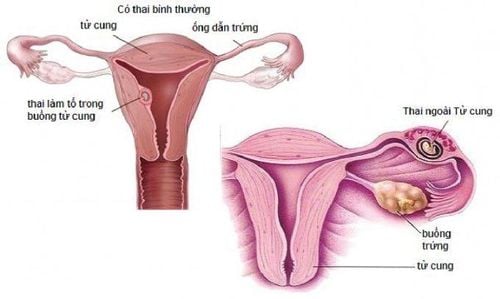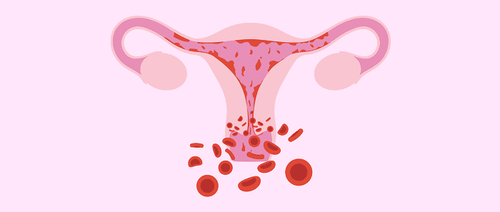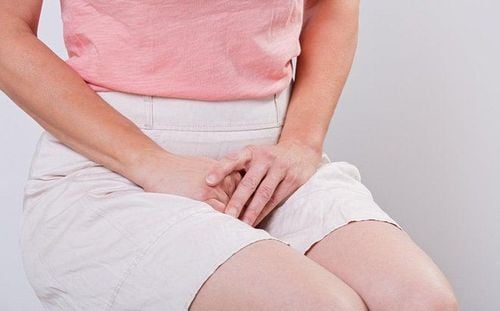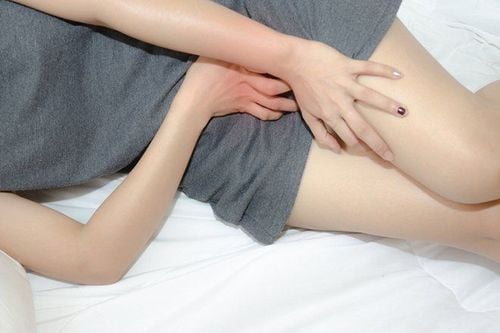This is an automatically translated article.
The article was professionally consulted by Specialist Doctor I Le Thi Phuong - Obstetrician and Gynecologist - Department of Obstetrics and Gynecology - Vinmec Ha Long International HospitalAdhesions of the uterus do not occur immediately but progress slowly, if detected late and not treated promptly, severe uterine adhesions can bring about many unpredictable harms such as menstrual disorders, difficulty difficulty in conceiving, ... can even cause infertility.
1. Is uterine adhesion dangerous?
Adhesions of the uterus is a condition where the front and back sides of the uterine wall are stuck together because the uterine lining is seriously damaged and cannot regenerate in time to restore the original.The phenomenon of uterine adhesions in women is a common complication after abortion, because women perform unsafe abortion leading to placenta, pregnancy or postpartum placenta. , after miscarriage.
In addition, the phenomenon of uterine adhesions can also be caused by the procedure to remove uterine fibroids, due to infections such as endometriosis, pelvic inflammatory disease.
When the uterine cavity is attached, the uterine lining will not be able to develop and peel normally, leading to menstrual disorders, irregular menstrual periods, amenorrhea or amenorrhea. Irregular menstruation is a sign of irregular ovulation, making it difficult to conceive, reducing a woman's ability to have children, causing infertility and infertility.
In case of partial uterine adhesions, sperm can move in to combine with the egg to fertilize to form a zygote, but the embryo will be difficult to enter the uterus, causing an ectopic pregnancy or causing miscarriage due to erosion of the uterine lining, premature birth due to loss of natural elasticity of the uterus, postpartum hemorrhage, fetal malformations...
If a woman has a total uterine adhesion, Sperm will not be able to swim inside to meet the egg and will not be able to fertilize it.
Before the complications of uterine adhesions, many people worry about whether they should have hysterectomy? In this regard, specialists say that a hysterectomy should be performed because if left untreated for a long time, the risk of infertility and discomfort in the uterus is very high. The cost of hysterectomy will depend on many factors.

2. Hysteroscopic surgery to separate the uterine cavity
2.1. Indications and contraindications Laparoscopic hysterectomy is indicated in case of incomplete adhesions, in need of childbirth or with complications. Contraindicated in case of complete uterine adhesions. 2.2. Step 1: Prepare and sterilize the diagnostic and surgical hysteroscope. Step 2: General examination and specialist assessment of comorbidities; counseling on risks, complications and complications of surgery; Hysterosalpingogram to determine adhesion lesions of the uterus for those who need surgery. Step 3: Instruct the patient to lie in a gynecological position, then inject pain relief for the patient. Step 4: Disinfect the genital area; catheterization and catheterization; insert a vaginal valve or speculum; Cervical pairing with Pozzi forceps. Step 5: Probe the uterus with a measuring tape. Then, insert the diagnostic hysteroscope into the uterus and inflate the uterus with one of the high molecular weight solutions: Hyskon or a solution without electrolytes such as: mannitol, sorbitol, dextran Step 6: To The fluid flows into the uterine cavity, it is necessary to place the fluid at a position 90-100 cm higher than the patient's abdomen and allow it to flow on its own. In the case, if it is a fluid bag, the sphygmomanometer can be bandaged and maintained at about 80 mmHg; Automatic suction pump: pump pressure 40-60 mmHg. Step 7: Continue to observe the entire uterine cavity to evaluate the damage to the uterine cavity. Step 8: After observing the entire uterus, the practitioner conducts dilation of the cervix to 10; Insert the surgical scope into the uterine cavity and use a straight cutting tip or a rolling ball to cut the adherent lesion (make a lesion cut when the lesion is clearly visible) and then cut off the adherent lesion. Step 9: Re-examine the uterus to check that there is no bleeding and that the uterine cavity is intact. 2.3. Follow-up after surgery After surgery, it is necessary to monitor the whole body, pulse, blood pressure, blood volume from the vagina at the end of surgery for a few hours. Use an artificial menstrual cycle immediately after surgery. After a few months, ask the patient to have a hysterogram to assess the integrity of the uterus.
3. Postoperative care and prevention of uterine adhesions
Ectopic pregnancy After hysteroscopy surgery to separate the uterus, the patient needs to:Rest a lot, limit heavy work. Diet rich in fiber, nuts like almonds or cashews..., dairy products, green tea,... to help keep the uterus healthy. Drink enough 2 liters of water every day to help laxatives, avoid constipation. Follow up with your doctor's appointment. In order to prevent uterine adhesions, it is necessary to:
Limit abortion, if it is necessary to have an abortion, you need to find a reputable medical address with specialized doctors and advanced facilities. Keep the intimate area clean, practice safe sex to avoid possible dangerous complications. Perform gynecological examination every 6 months to effectively screen gynecological diseases. In order to help customers detect and treat other gynecological diseases early, Vinmec International General Hospital has a basic gynecological examination and screening package, which helps customers detect inflammatory diseases early and help treat diseases. Easy, inexpensive treatment. Basic gynecological examination and screening package for female customers, has no age limit and may have the following symptoms:
Pain, itching in the vagina Female customers have several risk factors such as poor personal hygiene, unsafe sex, abortion, ... Female customers have other symptoms such as: Abnormal vaginal discharge, itching, pain in the intimate area, abnormal vaginal bleeding . Irregular bleeding in the vaginal area Menstrual problems: irregular periods, irregular periods Abnormal vaginal discharge (with a foul odor, a different color than usual. If you have unusual symptoms, you should to be examined and consulted with a specialist doctor.
Please dial HOTLINE for more information or register for an appointment HERE. Download MyVinmec app to make appointments faster and to manage your bookings easily.














